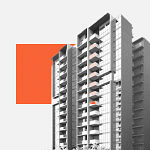[HONG KONG] Two of Hong Kong’s iconic property landmarks are benefiting from the city’s surprisingly loose short-term lending environment, although analysts say this is most likely a temporary blip unless there is an overhaul of the city’s long-standing currency peg to the US dollar.
The Henderson – a new 36-storey, curvy glass tower by Henderson Land that is designed to resemble the bud of Hong Kong’s official flower, the bauhinia – has an 80 per cent occupancy rate since it was completed last year.
Across Victoria Harbour on the waterfront promenade stands Victoria Dockside, a sprawling mall, office and hotel complex that its developer, New World Development, is pledging for debt repayment.
On May 30, New World announced the deferral of payments on some of its senior perpetual bonds, sparking concerns among investors about the company’s liquidity.
Both developers – the most leveraged of Hong Kong’s top four players – are beneficiaries of what several analysts described as an “unusual” spread between short-term Hong Kong dollar lending rates and US Federal Reserve fund rates.
Confluence of factors
This is due to a confluence of factors, including interventions by the Hong Kong Monetary Authority to maintain the US dollar peg and a sluggish appetite for the local currency.
A NEWSLETTER FOR YOU

Tuesday, 12 pm
Property Insights
Get an exclusive analysis of real estate and property news in Singapore and beyond.
The US dollar peg means that, in theory, Hong Kong and US rates should move in lock step.
Instead, the spread has reached its widest point since 1988, resulting in effective mortgage rates dropping from 3.5 per cent to 2 per cent, and bringing at least a 5 per cent net profit improvement for many developers, indicated estimates by Morgan Stanley.

Henderson and New World in particular are receiving a much-needed financial facelift from the low one-month Hong Kong interbank offered rate (Hibor), which has remained around 0.6 per cent since the sudden shift on May 5 from 3.98 per cent to 0.59 per cent.
The one-month Hibor fell to as low as 0.55 per cent in June from more than 4 per cent two months prior, though longer-term lending rates remain elevated.
Morgan Stanley calculated that cash interest expense amounts to as much as 70.4 per cent and 122.9 per cent, respectively, of Henderson and New World’s underlying profit.
Hong Kong’s home mortgage borrowers are also getting relief through falling short-term lending rates to which their mortgage payments are linked. Residential buying interests are also piqued by the lower lending rate.
Adding to that is a push from discounted inventory sales in a competition by developers to obtain cash or seize market share.
“For residential, (Hibor and mortgage rates have) always been highly correlated. The commercial property market is also correlated, but it’s more nuanced because there are fewer commercial transactions in the market, and the investment cost is substantial,” said Roddy Allan, the head of Asia-Pacific research at JLL, an industry consultancy. “So the market is much less liquid. There’s less of a correlation – but there’s still a correlation there for sure.”
He cited recent government data to show a doubling of transactions for new flats to 2,259 in the month to May 25, as the effect of the low Hibor rates kicked in.
Grade A offices
In May, vacancy in Grade A offices also improved on average to 13.6 per cent, following a correction of a 40.5 per cent decline in rental of Grade A offices in the first quarter of this year, down from the peak in the third quarter of 2019, indicated JLL.
If all this sounds too good to be true for property borrowers and buyers, S&P Global’s credit analysts fret about an upcoming flood of discounted flats to hit the market in an already oversupplied residential market.
Figures from the Housing Bureau of Hong Kong show that completed new homes and unsold inventory stood at 28,000 units as at March 2025. And developers are still building – planning more than 20,000 units annually in 2025 and 2026.
Offering deep discounts to boost sales of new homes has proven to be a successful formula for developers in recent years.
Sun Hung Kai Properties has sold 1,520 units at its Sierra Sea development in Sai Sha since they went on sale in May, representing a sell-through rate of 96.5 per cent. They achieved this by offering prices 20 per cent lower than those of comparable nearby homes listed in the secondary market.
Earlier in June, The Henley in Kai Tak, built by Henderson Land, sold 98 per cent of its flats at prices on average 18 per cent lower than previous launches.
Unless the US dollar peg breaks, analysts say the current renaissance for the local property market will be short-lived.
The anomaly of low short-term interest rates cannot be sustained without a further cut in rates by the US Federal Reserve, as carry trades to arbitrage the differing rates and rising demand for Hong Kong dollars could “bring the rate back to a normal level”, said analysts at Morgan Stanley.
Analysts’ expectations
Some analysts expect the commercial property market to bottom out some time in 2026.
Rebecca Tang, director of Asia-Pacific corporate ratings at Fitch Ratings, projects the vacancy rate for Hong Kong’s Grade A offices to trend up towards 20 per cent over 2025 and 2026, although she said that is likely due to new completions in the pipeline.
The vacancy rate for grade A offices stood at 17.4 per cent, and for overall offices, at 16.3 per cent as at the end of 2024, indicated Fitch.
After that, hopes are high that the commercial market will rebound, albeit gradually.
“While trade tariffs and geopolitics may be causing some delays around decision-making globally, overall we still see some green shoots in the Hong Kong office market even though performance is increasingly diverging,” said JLL’s Allan.


